Eight Asteraceae to Know and Love
(A sampling of distinctive fall-flowering
members of the Asteraceae)
A description of the family (from Lowden, 1997)
Herbs; rarely dioecious; leaves alternate, opposite, or whorled; flowers bisporangiate, monosporangiate, or neutral,
epigynous, in dense heads on a common receptacle surrounded by an involucre of bracts (phyllaries); pappus in position of calyx, of hairs, bristles, awns, teeth, or scales. or cuplike. or absent; corolla tubular and usually regular, usually 5-lobed, or ligulate and zygomorpbic (tubular at base but flat and straplike above); heads discoid (of flowers with only tubular corollas); ligulate (of flowers with only ligulate corollas). or radiate (of a central disk of flowers with tubular corollas surrounded by one or more series of flowers with ligulate corollas, called ray flowers); flowers subtended by bracts (pales), receptacle then chaffy, or flowers bractless, receptacle then naked; stamens 5, inserted on the corolla, filaments separate, anthers usually united around the style or rarely separate or scarcely united; carpels 2. united; ovary 1-1oculed with 1 ovule; style 1, usually 2-branched at apex; stigmas 2; fruit an achene. (Compositae. nom. altern.)
Introduction to the family and the Lowden Franklin County Flora.
Sawtoothed sunflower (Helianthus grosesseratus)
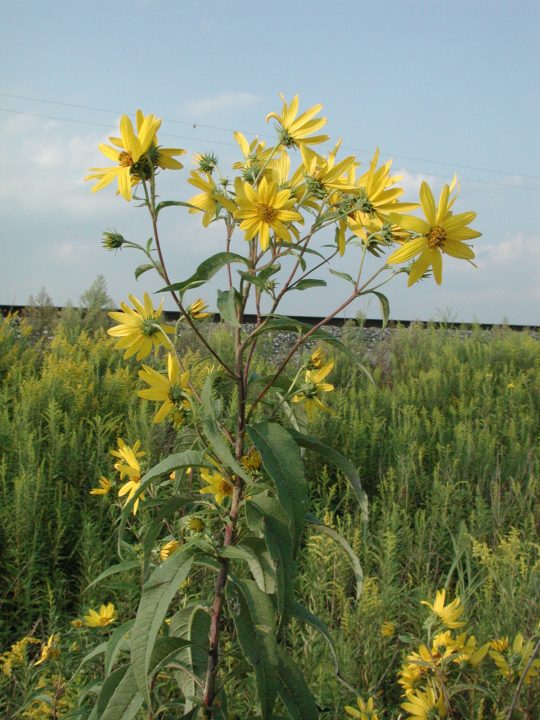
sawtoothed sunflower
sneezeweed (Helenium autuminale)
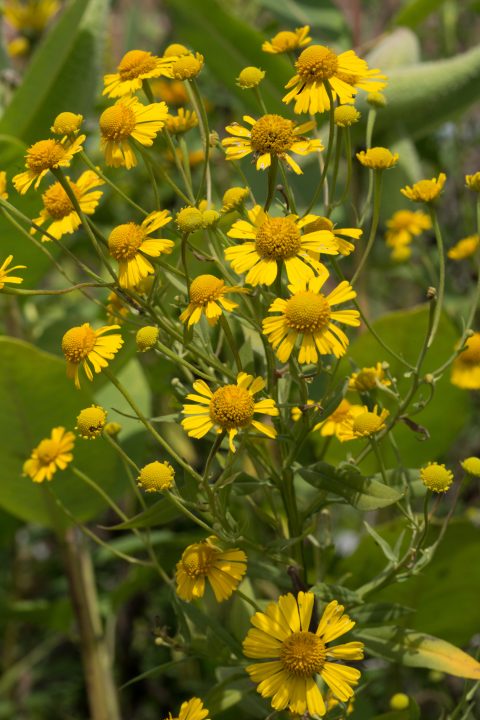
sneezeweed
pilewort (Erechtites hieraciifolius)
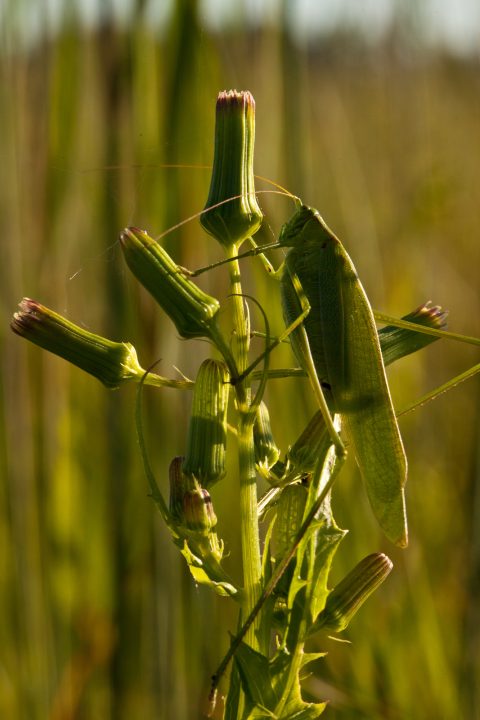
pilewort
tall coreopsis (Coreopsis tripteris)
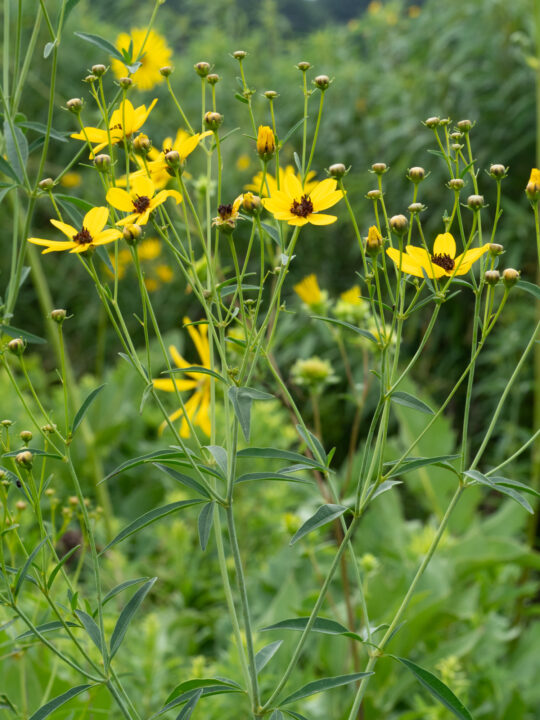
tall coreopsis
stiff goldenrod (Solidago rigida)
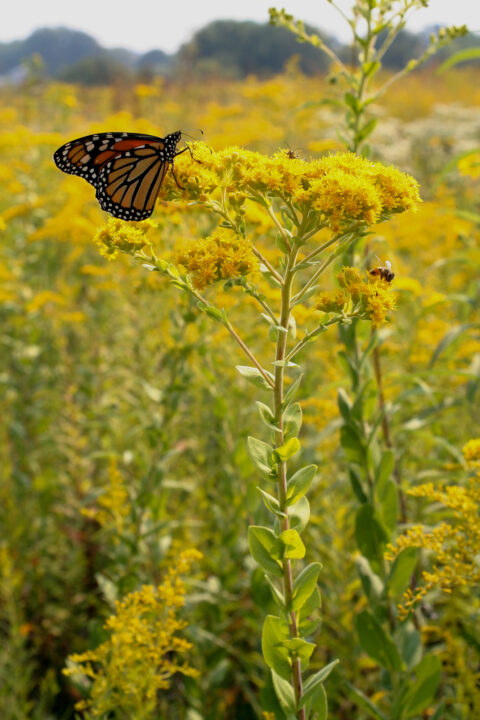
stiff goldenrod
field thistle (Cirsium discolor
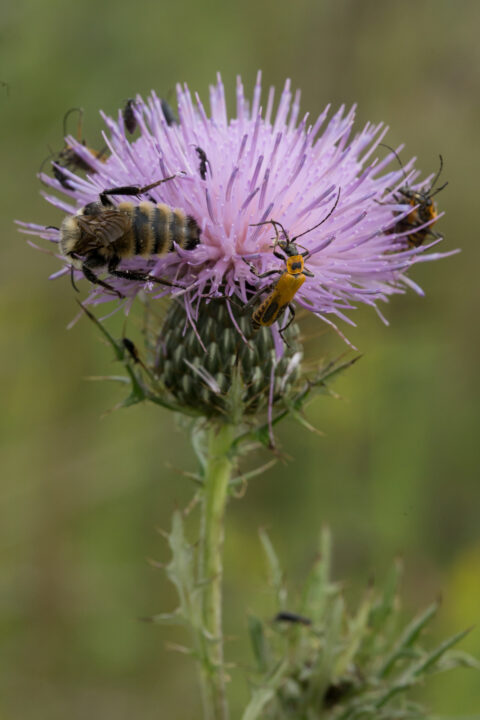
field thistle
tall boneset (Eupatorium altissimum)
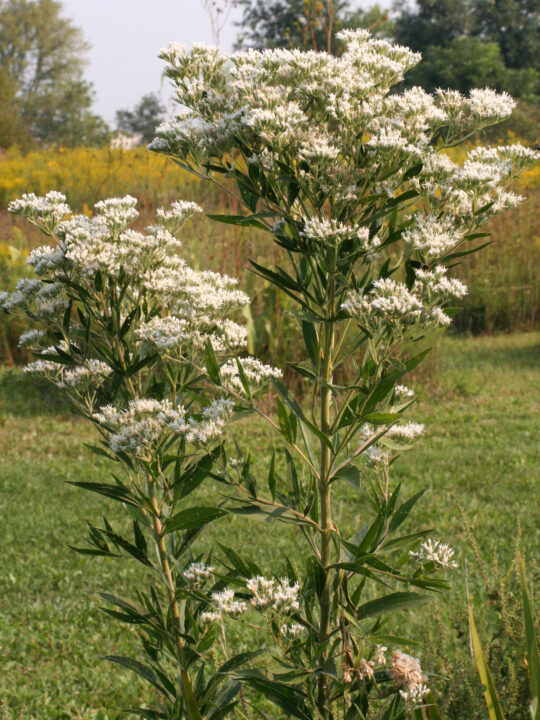
tall boneset
chicory (Cichorium intybus)
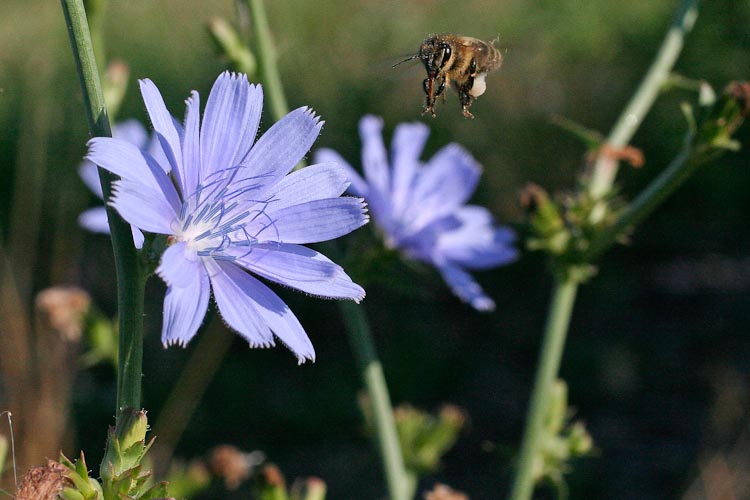
chicory
